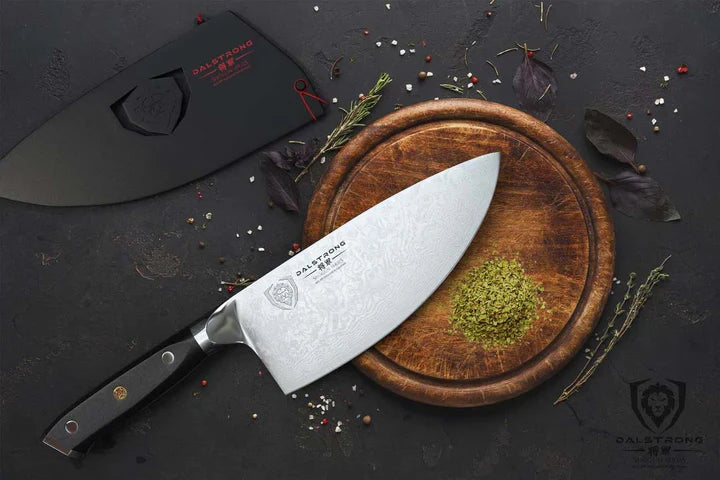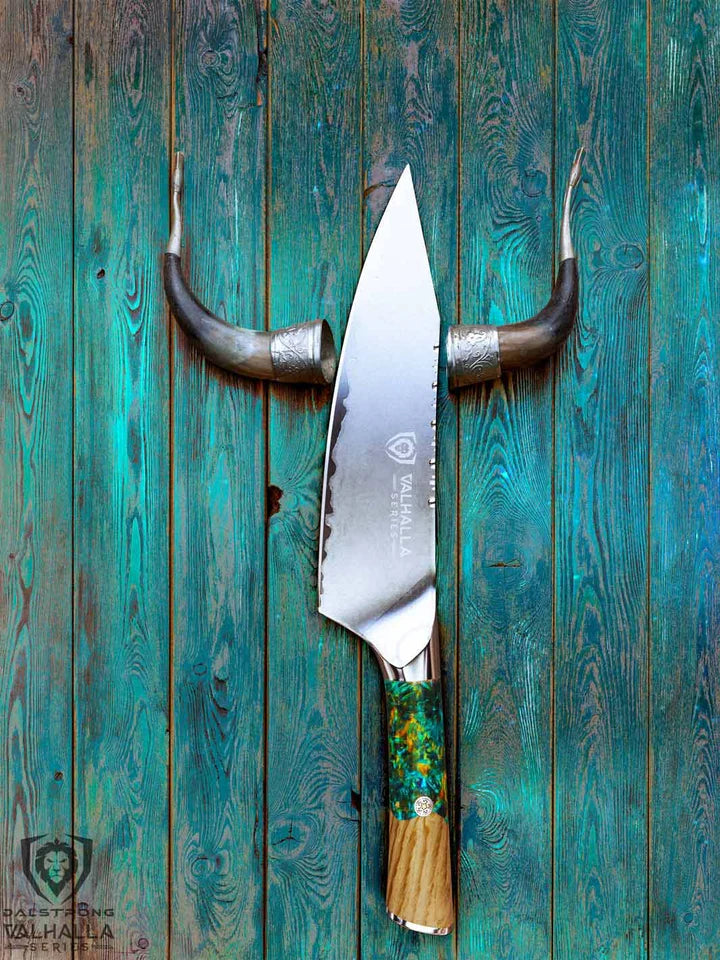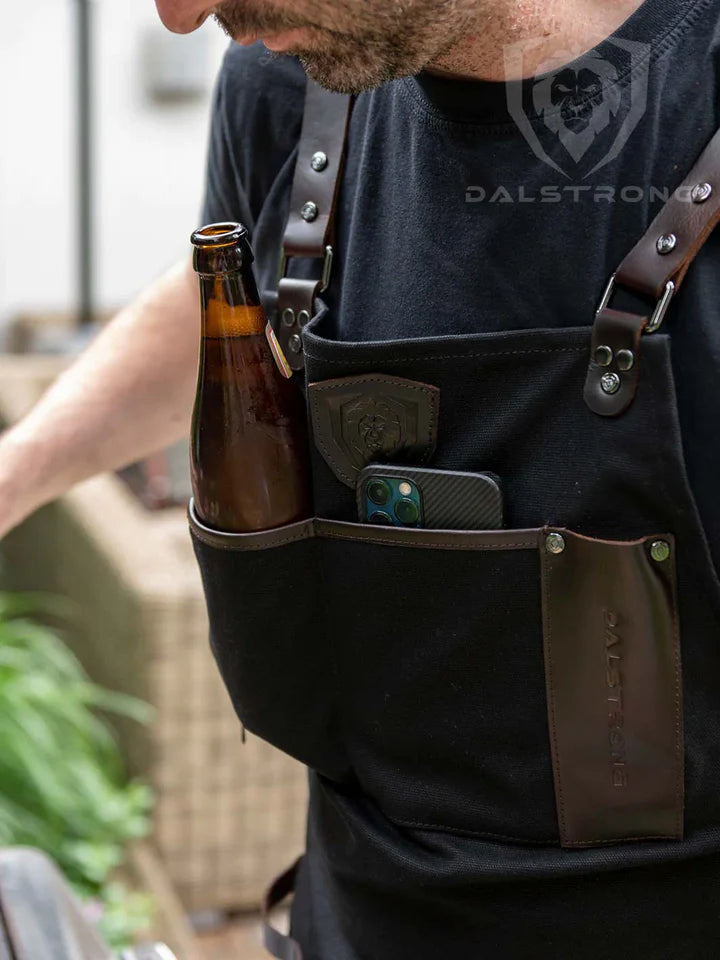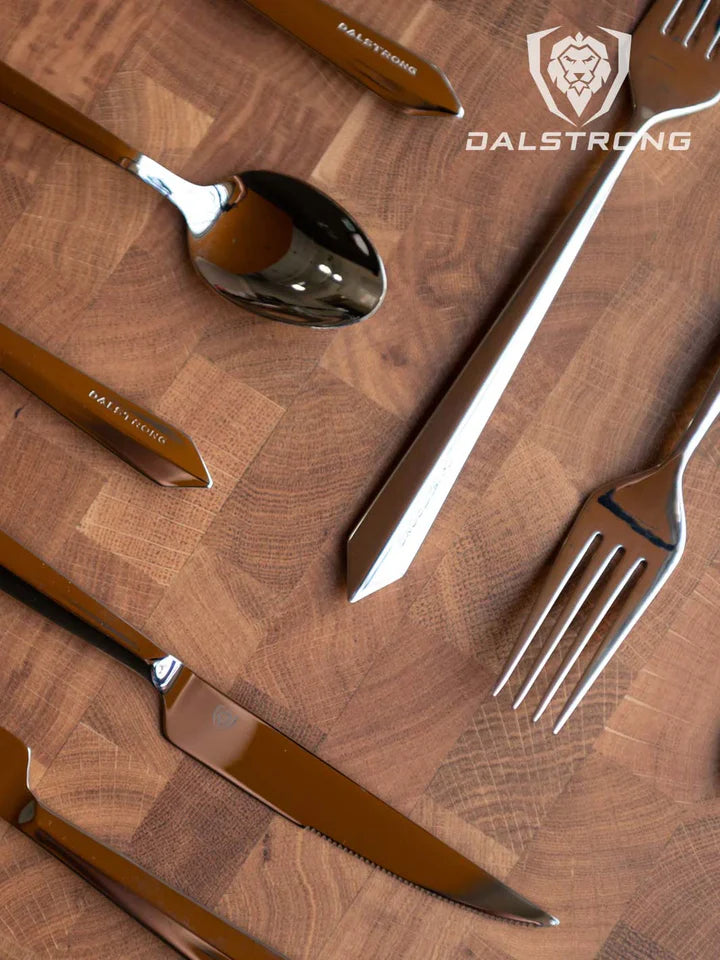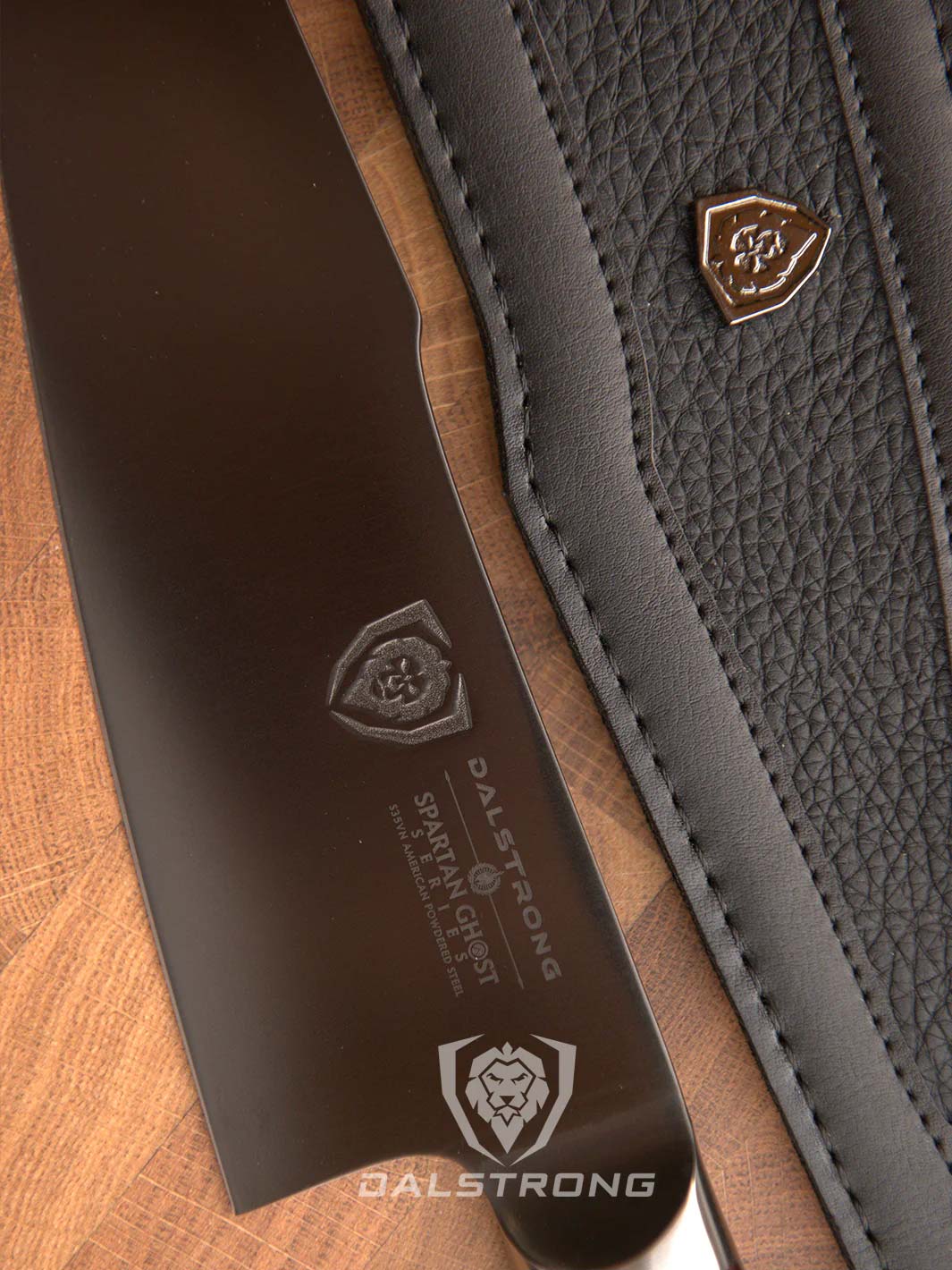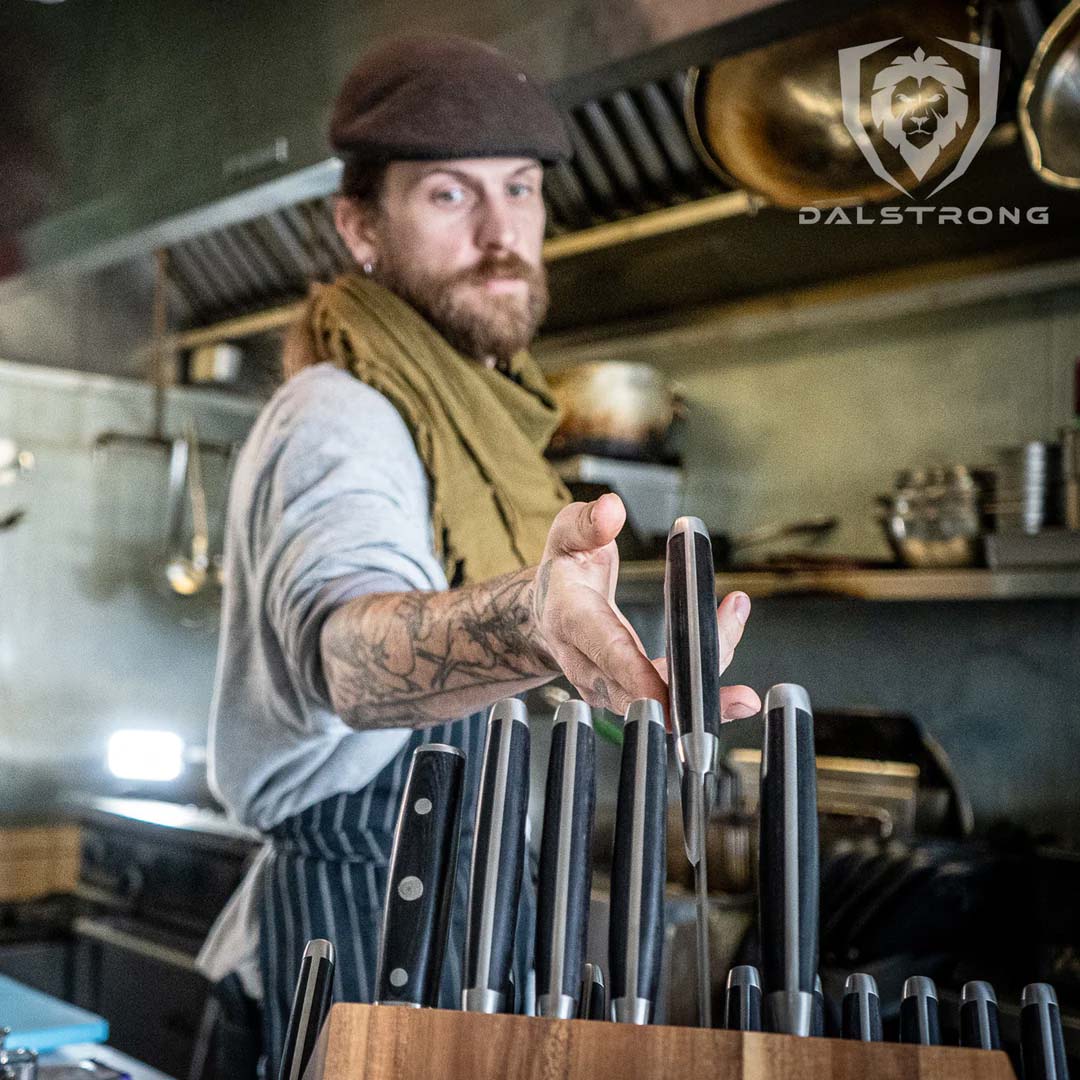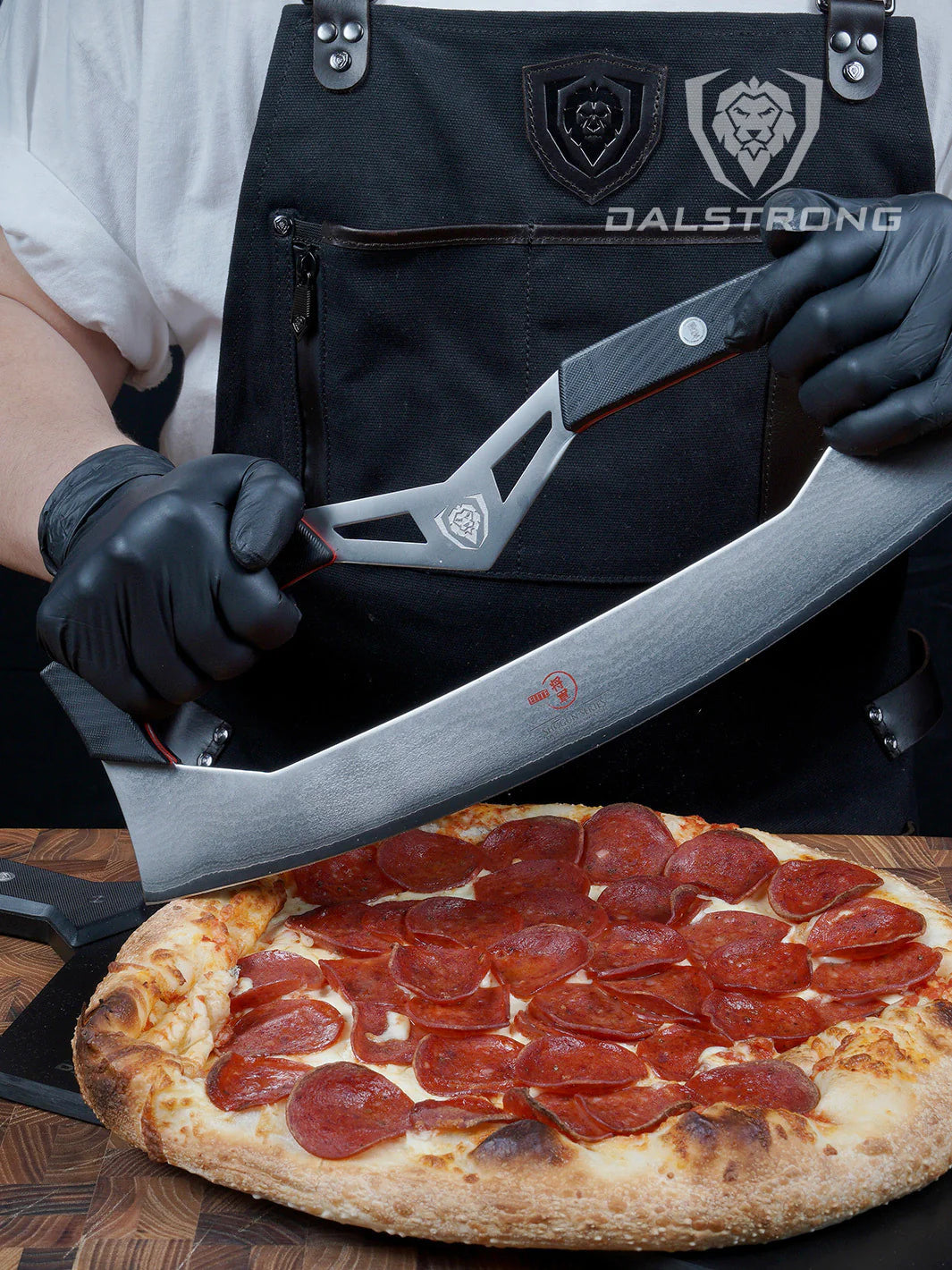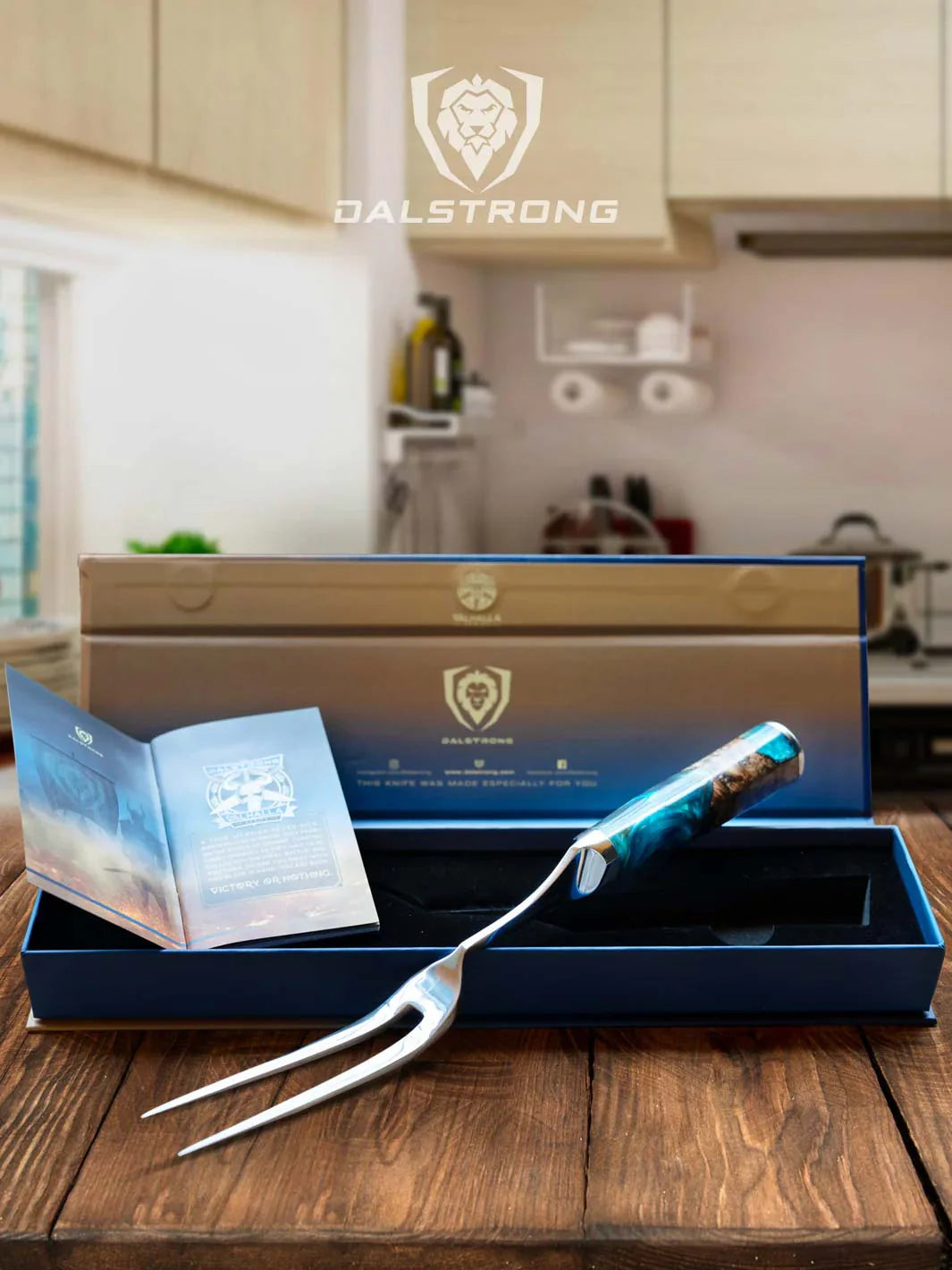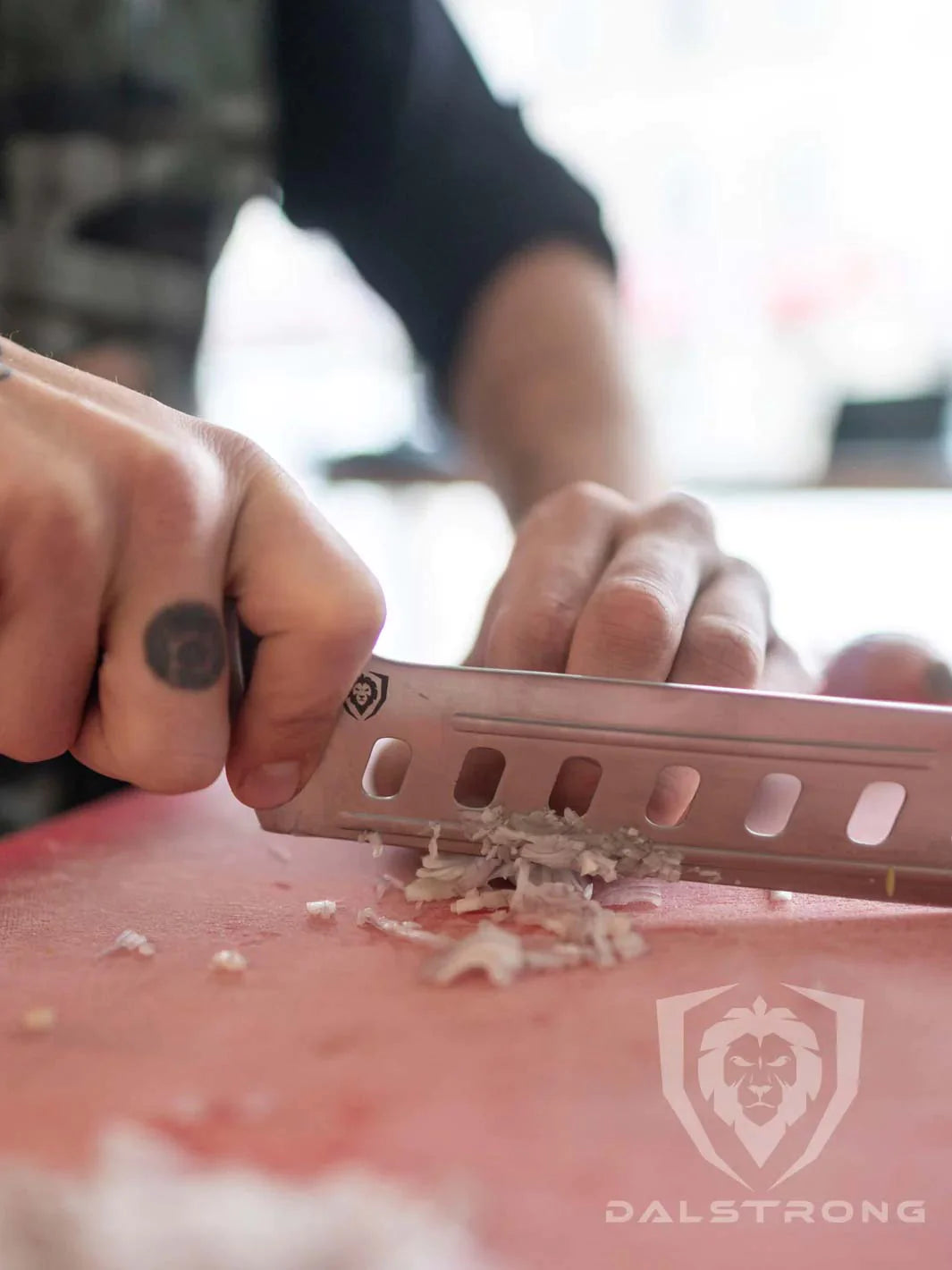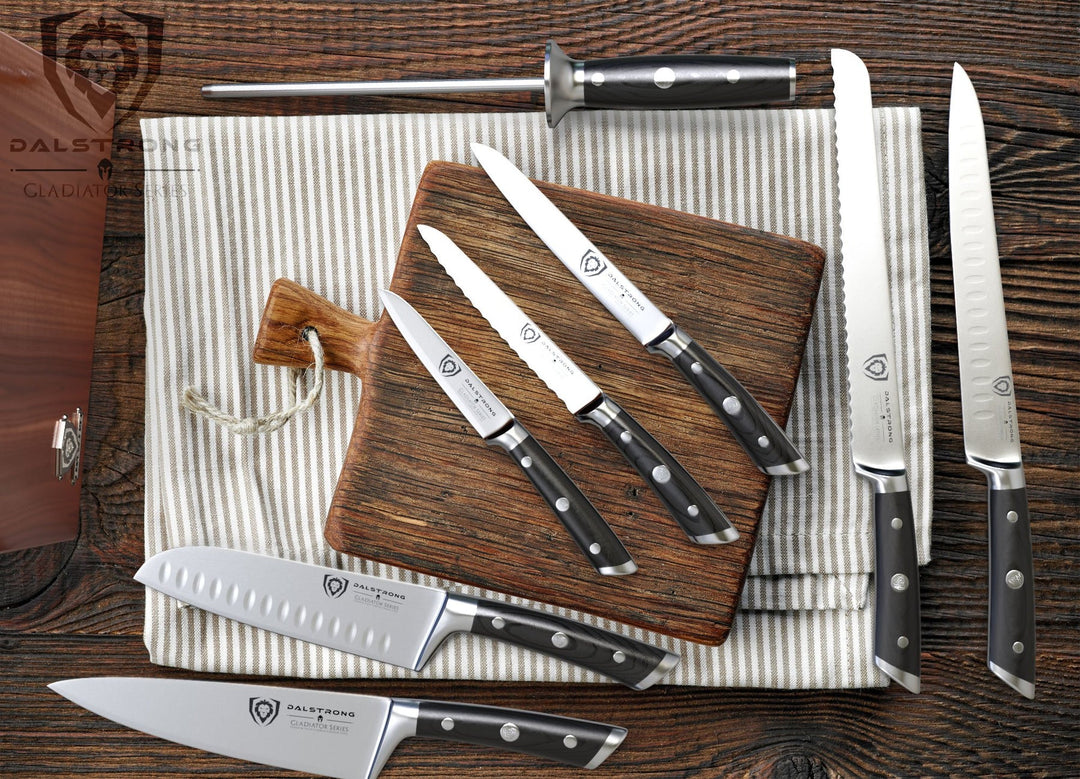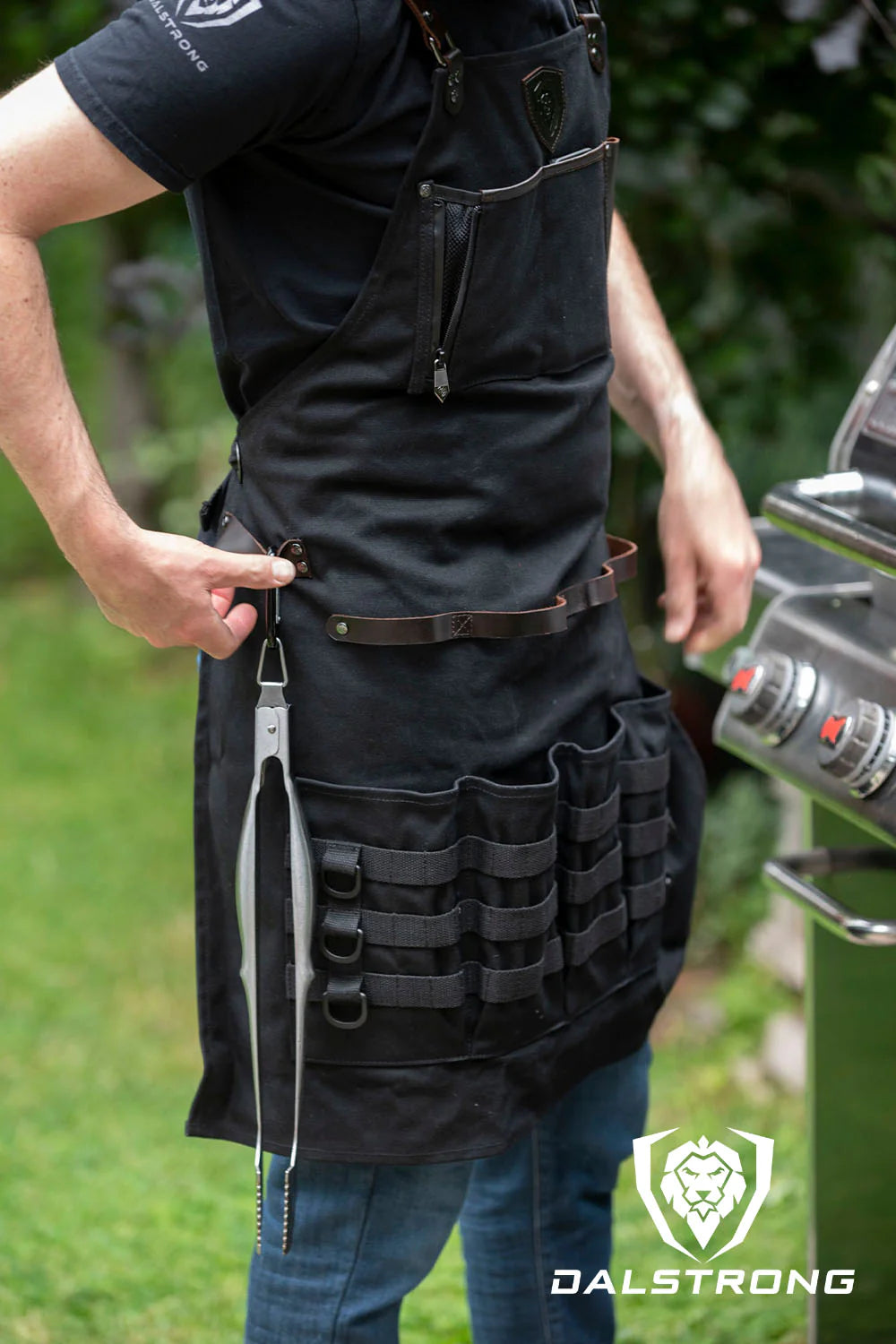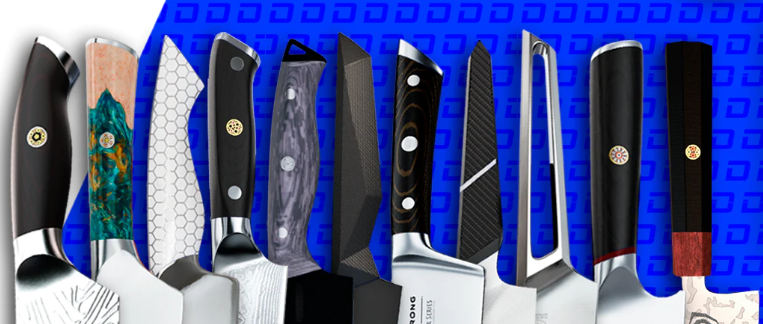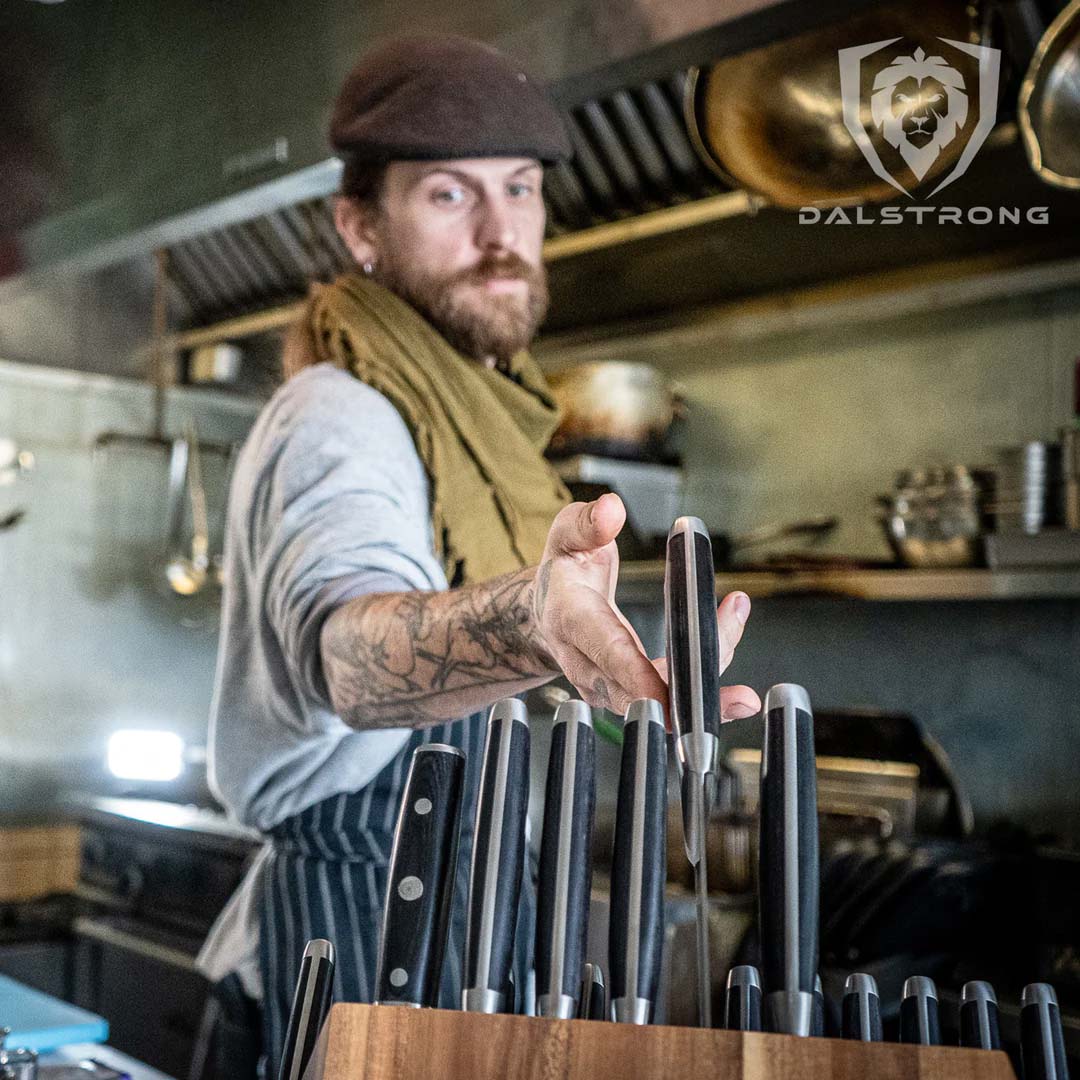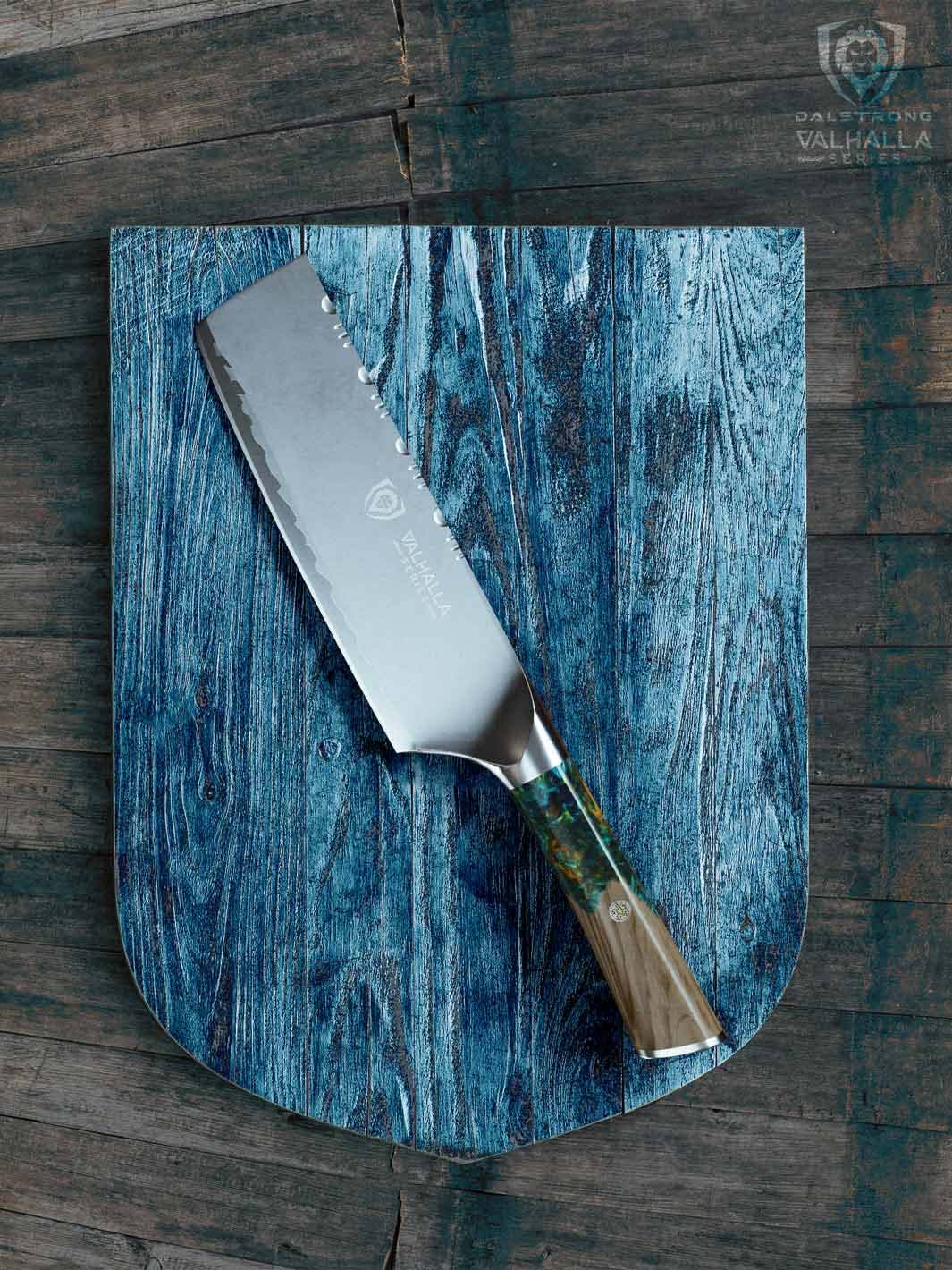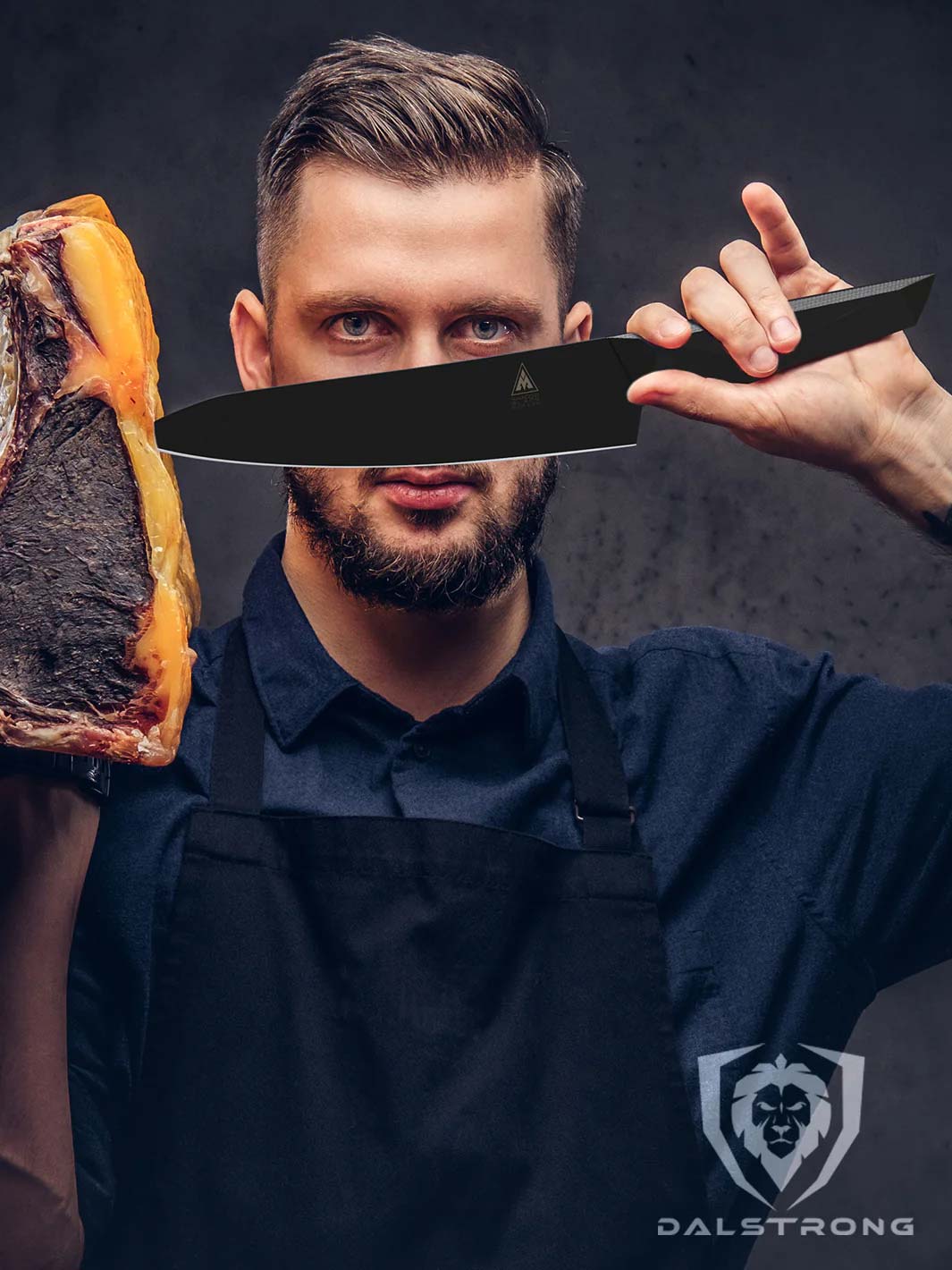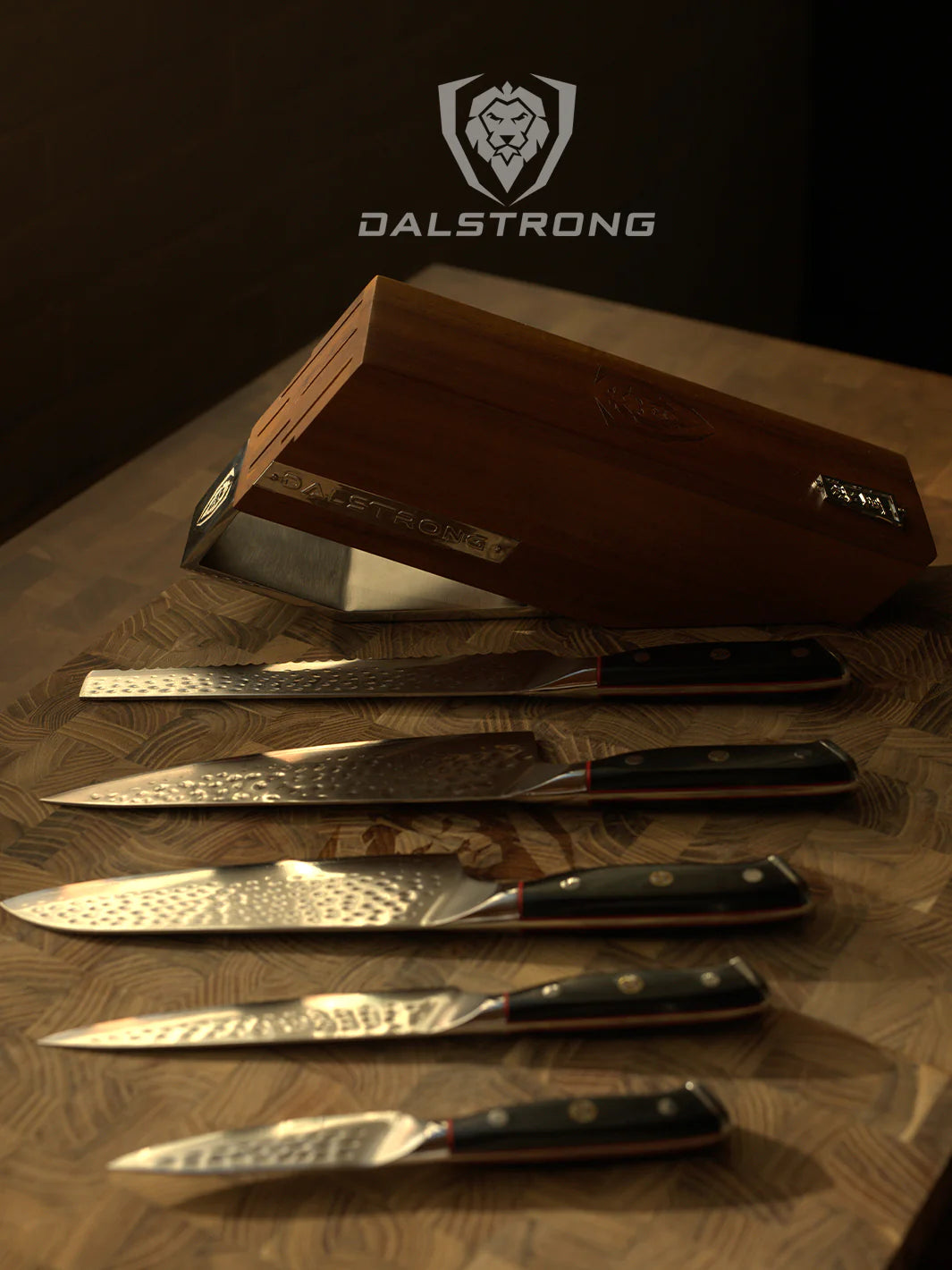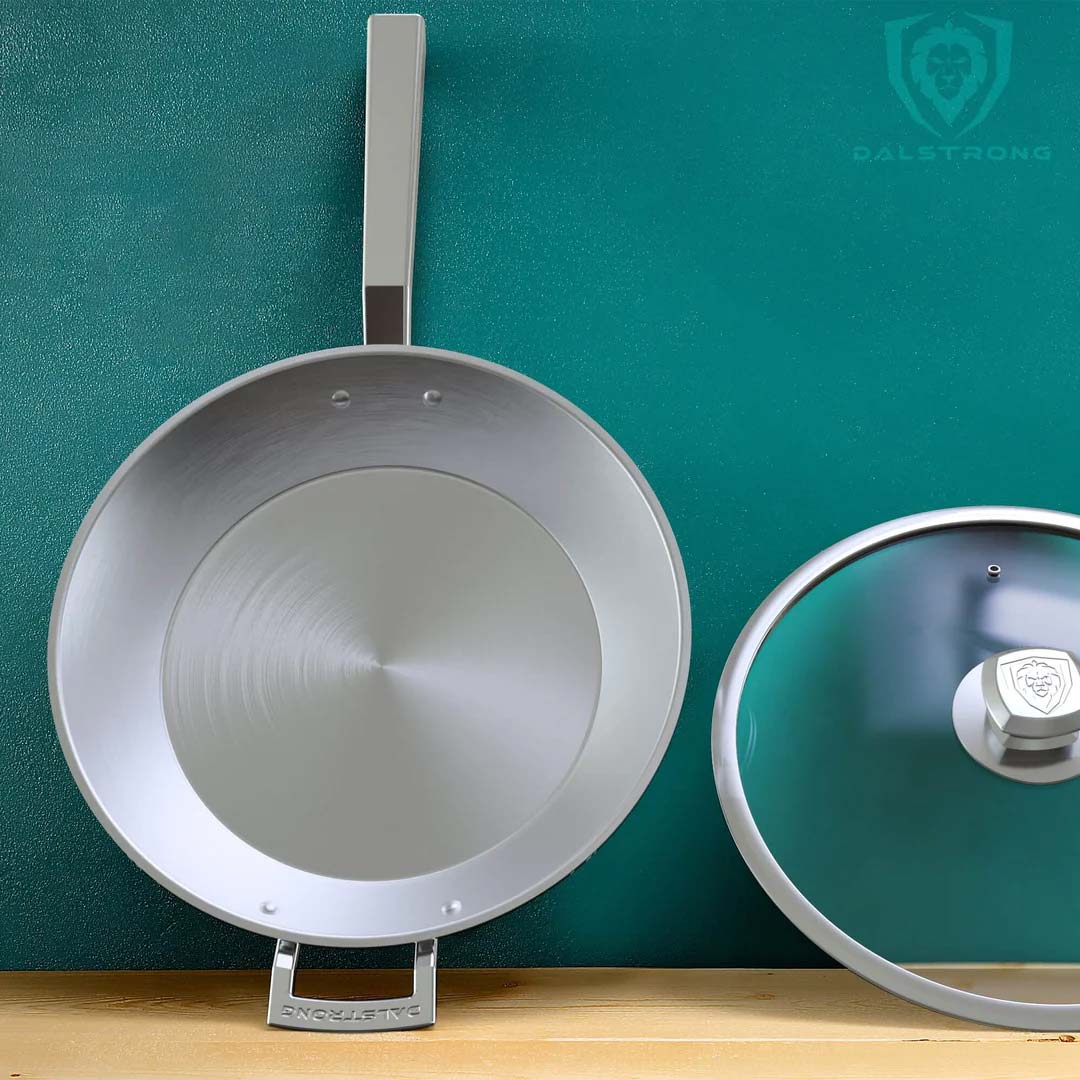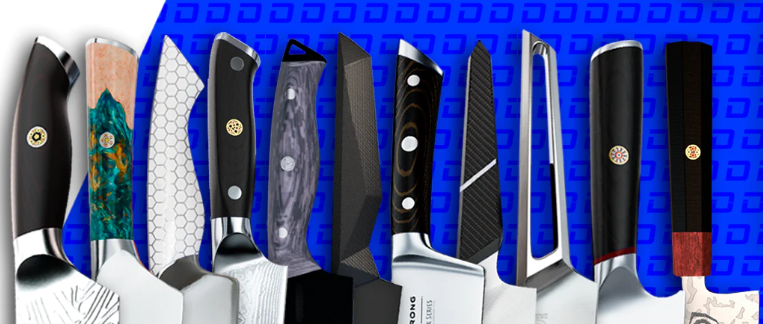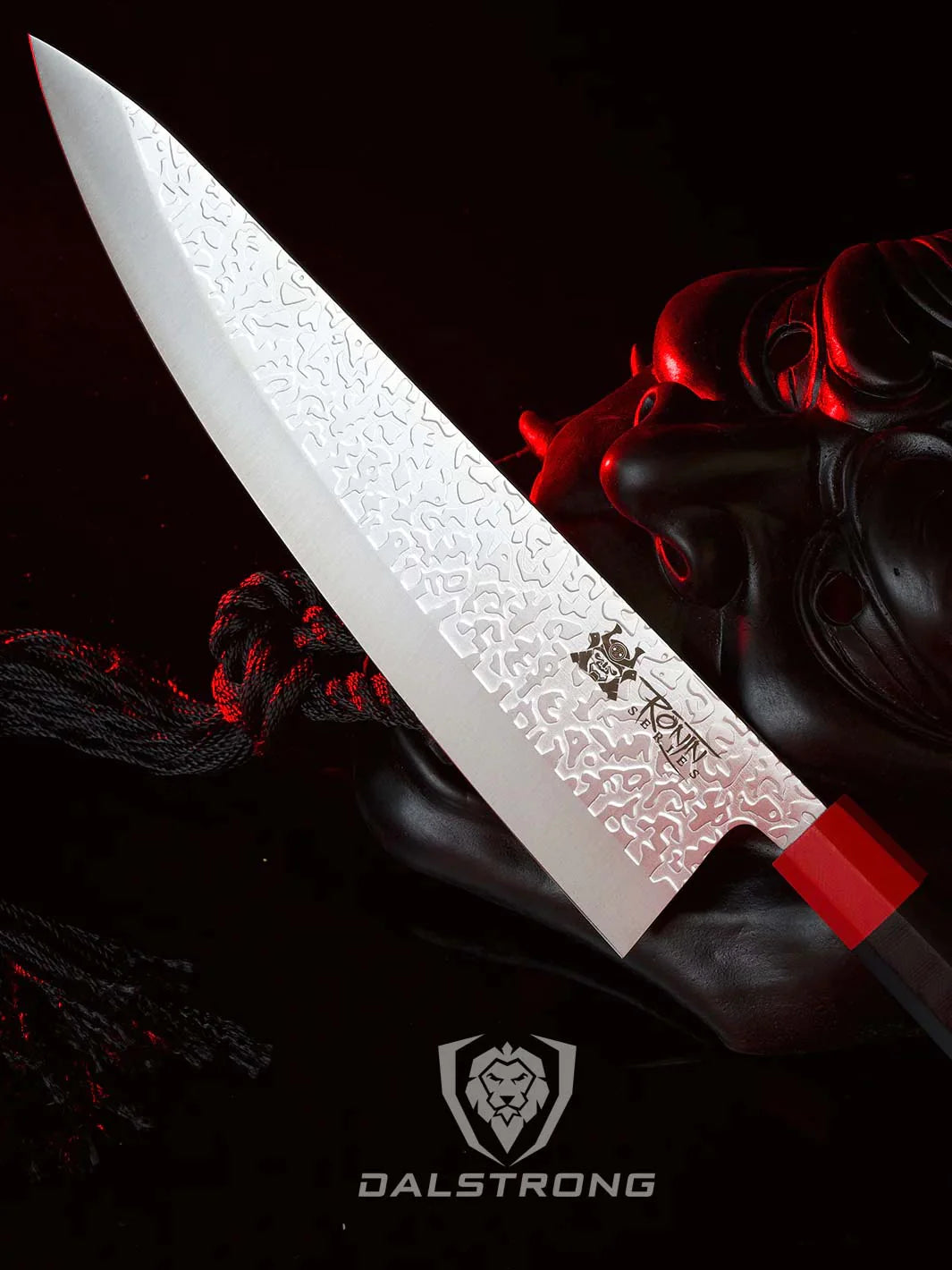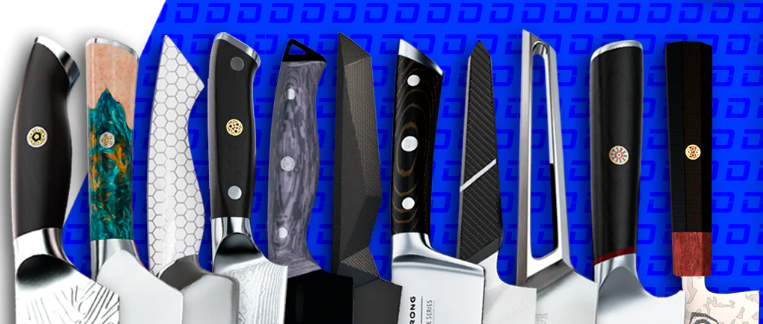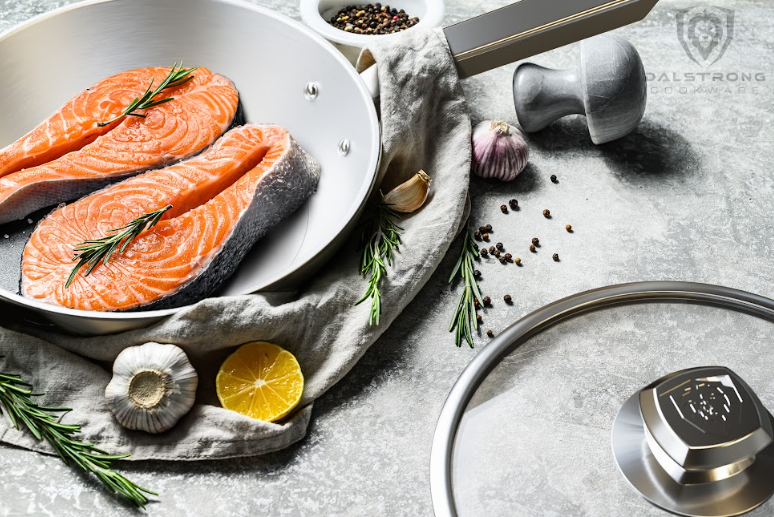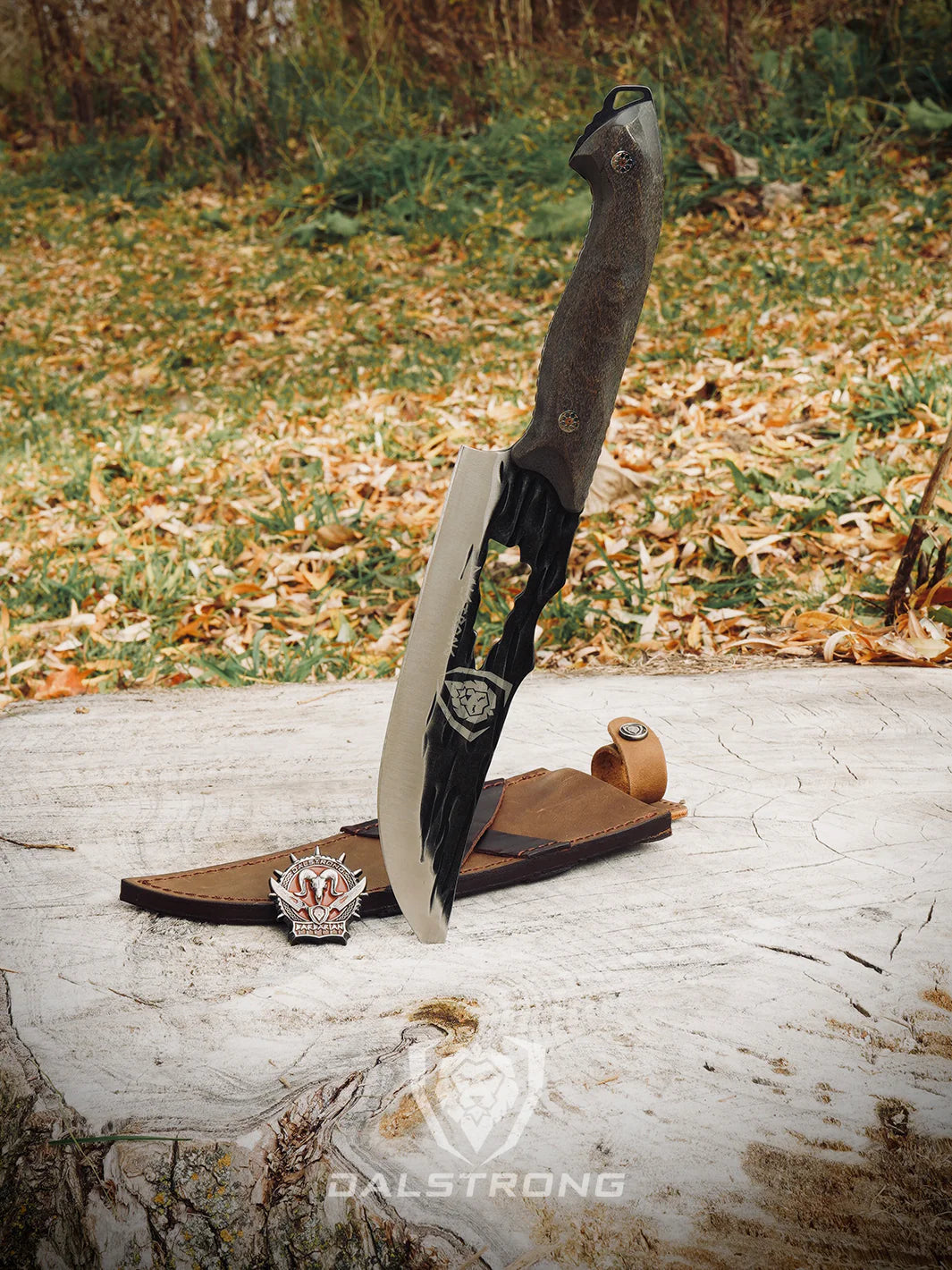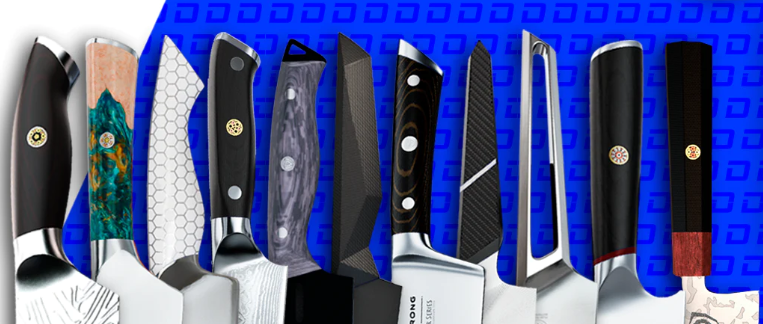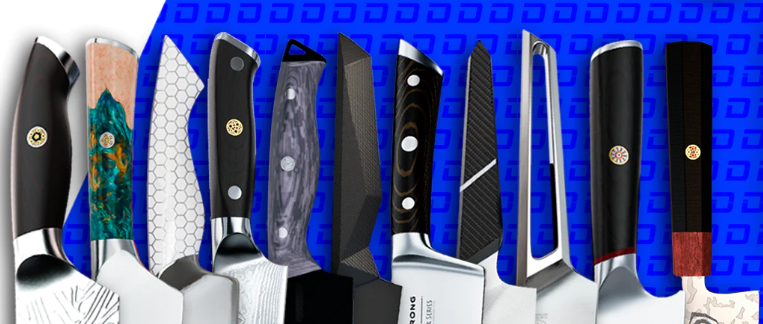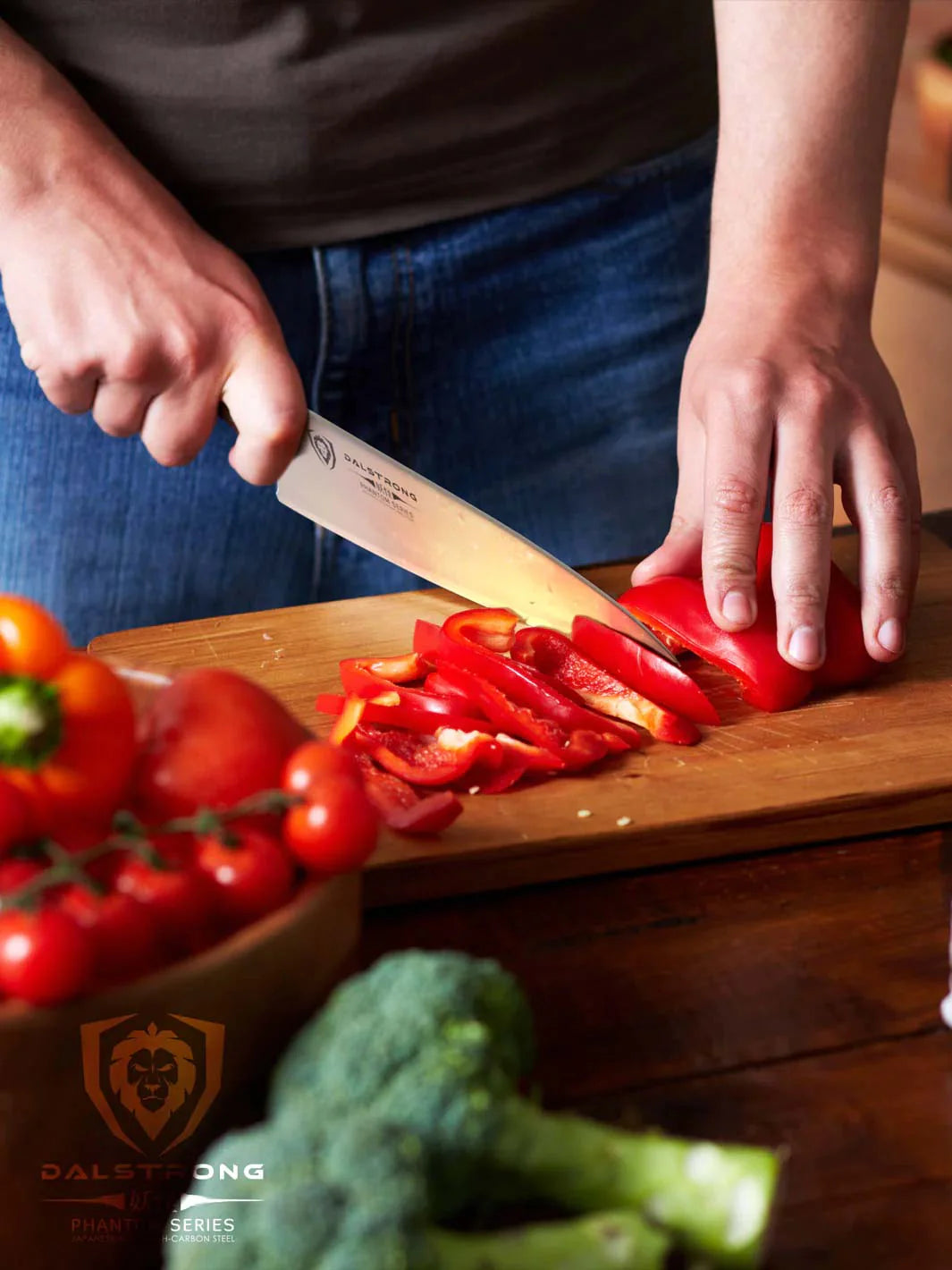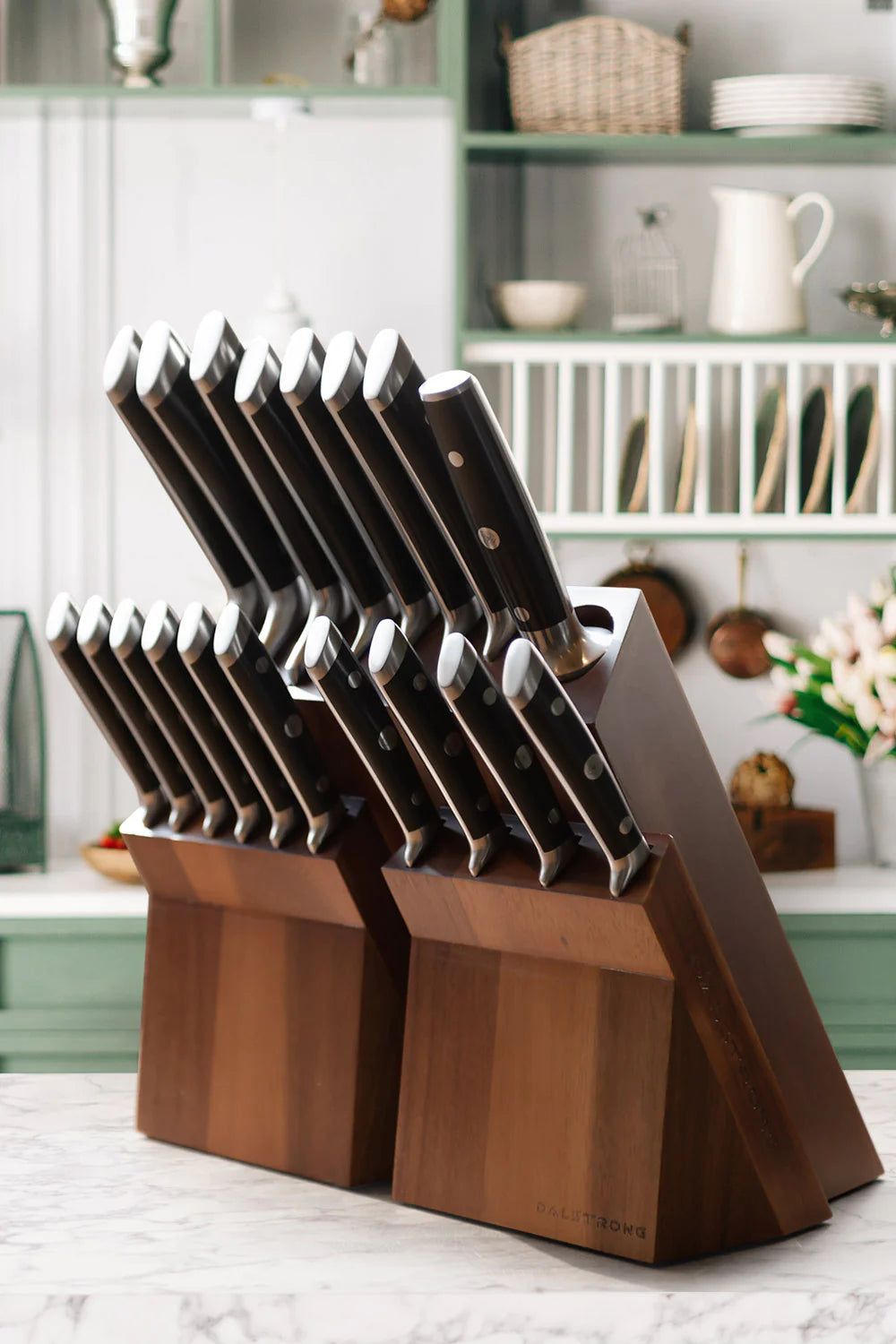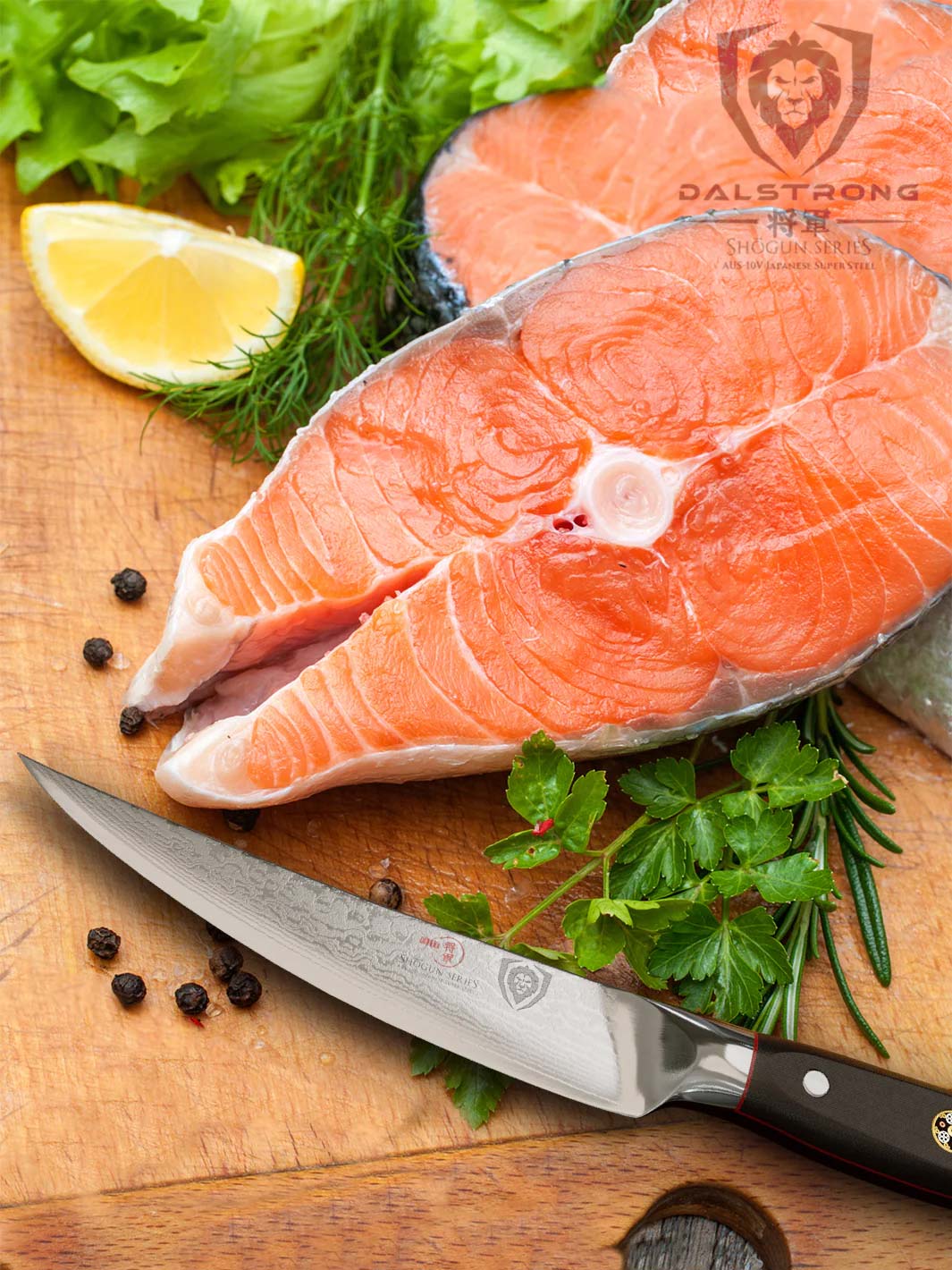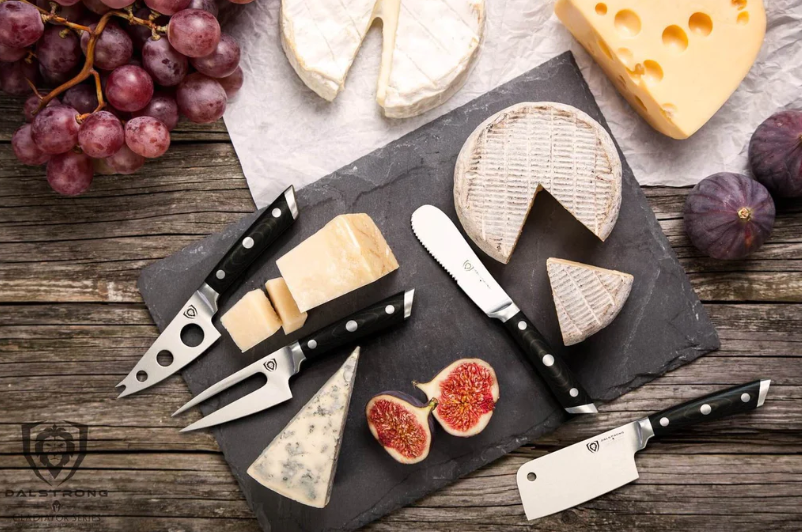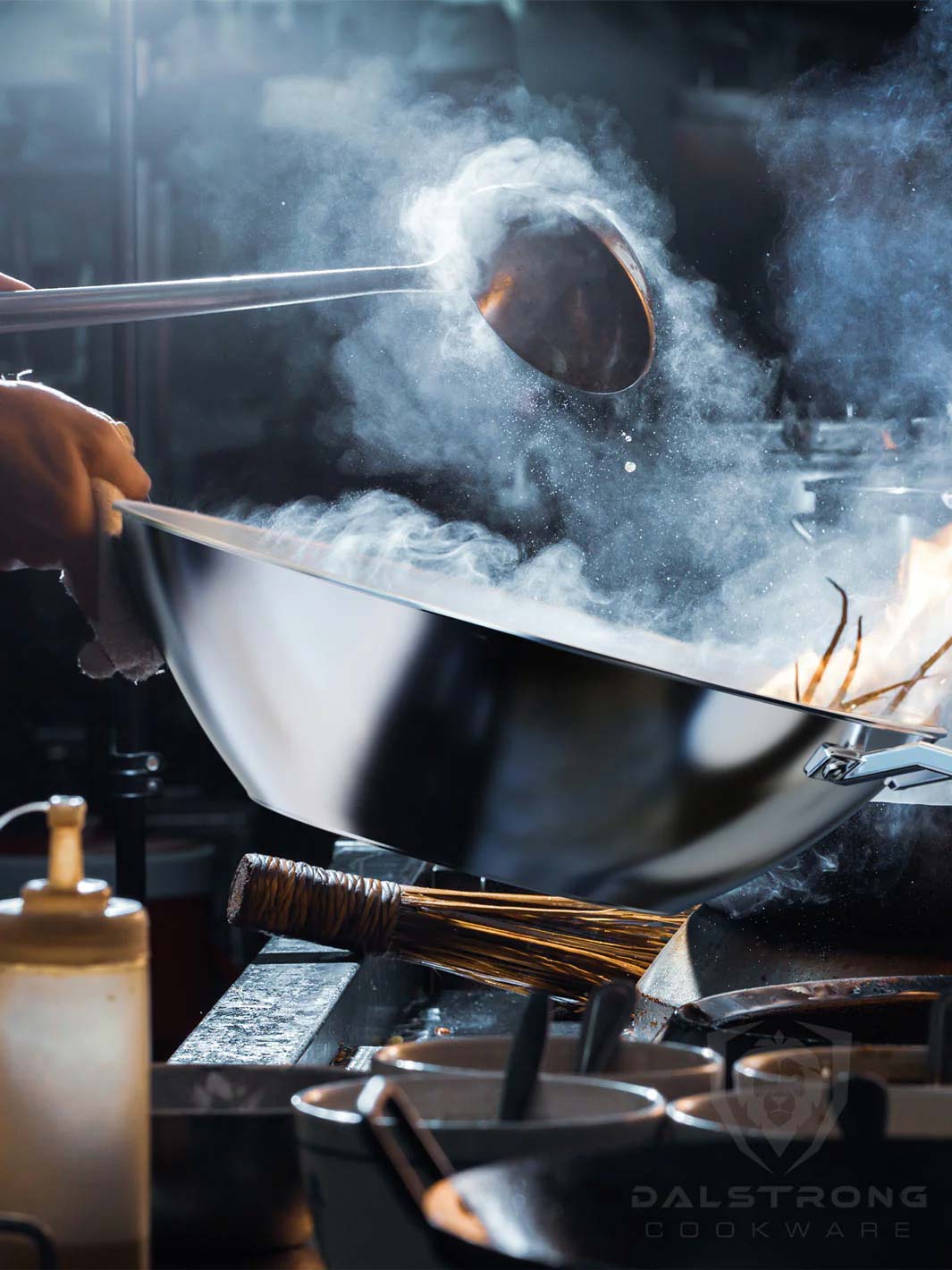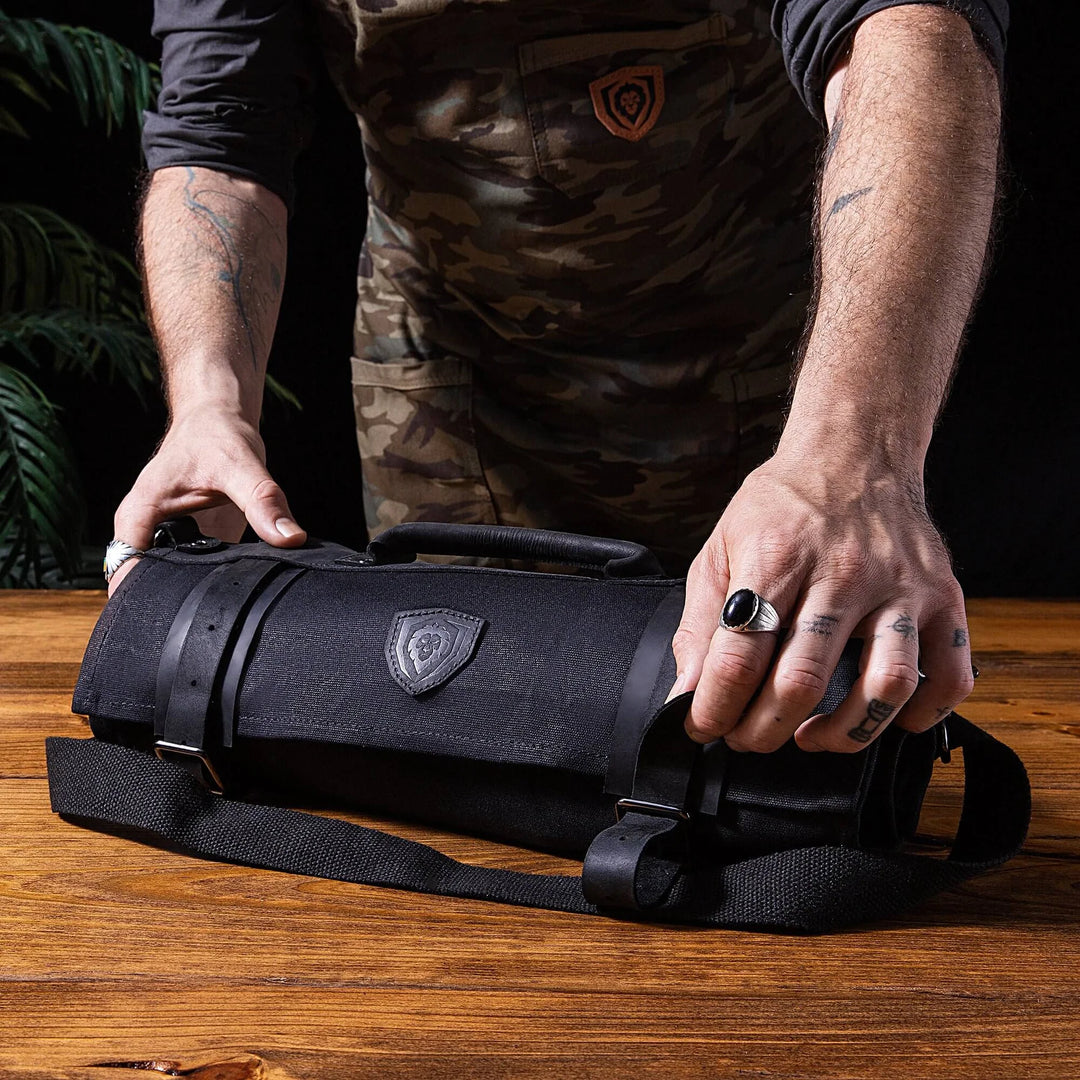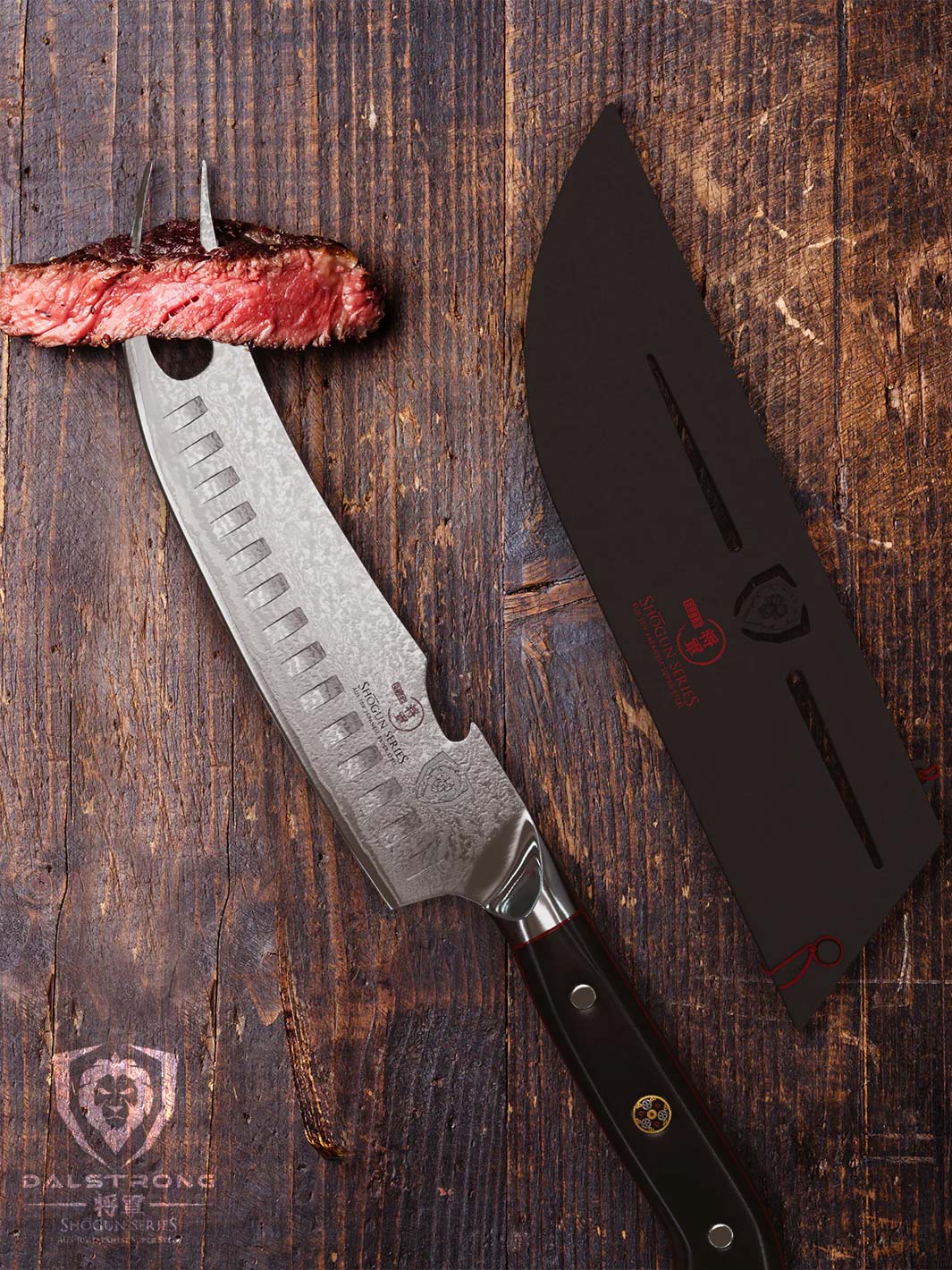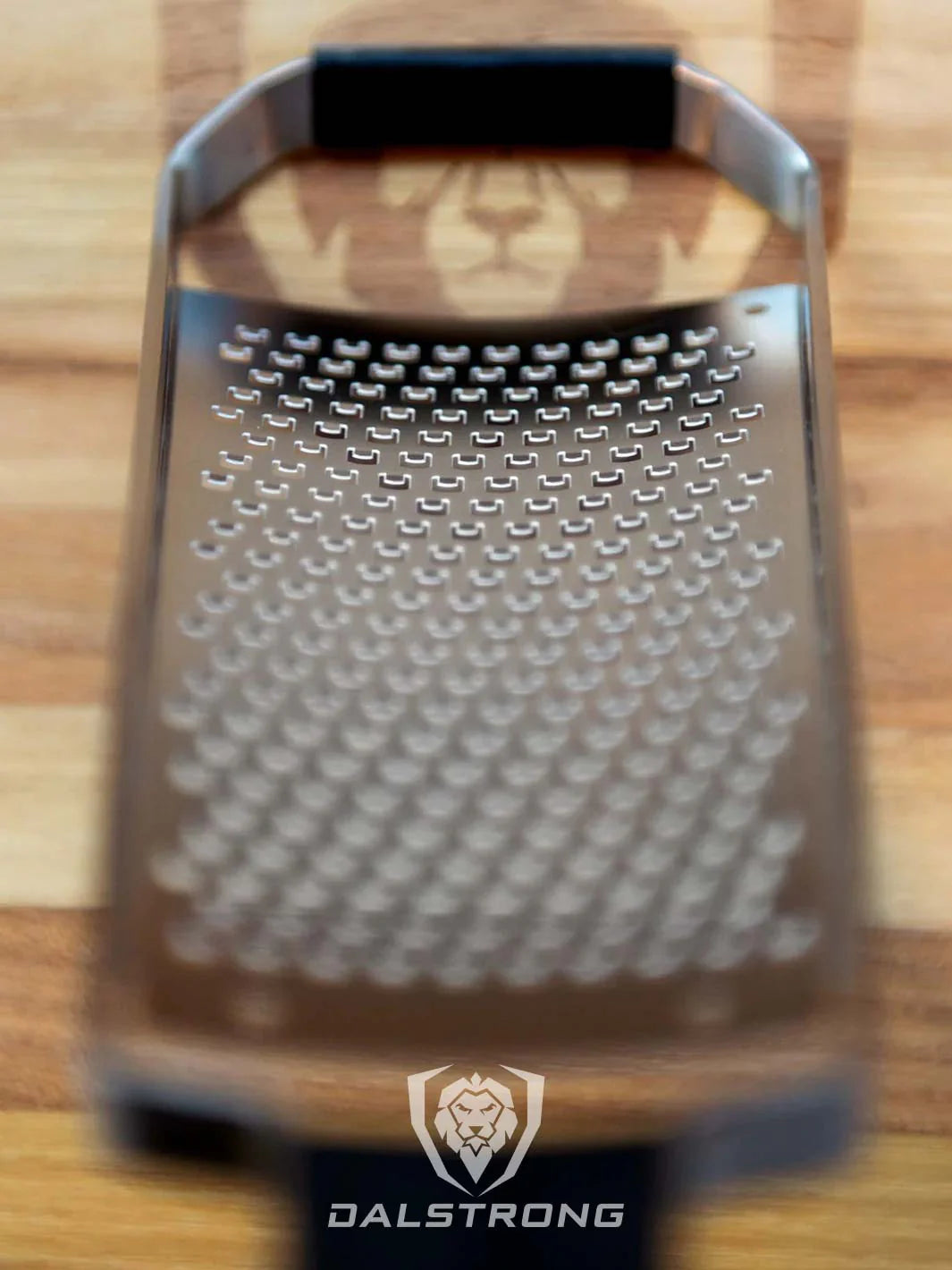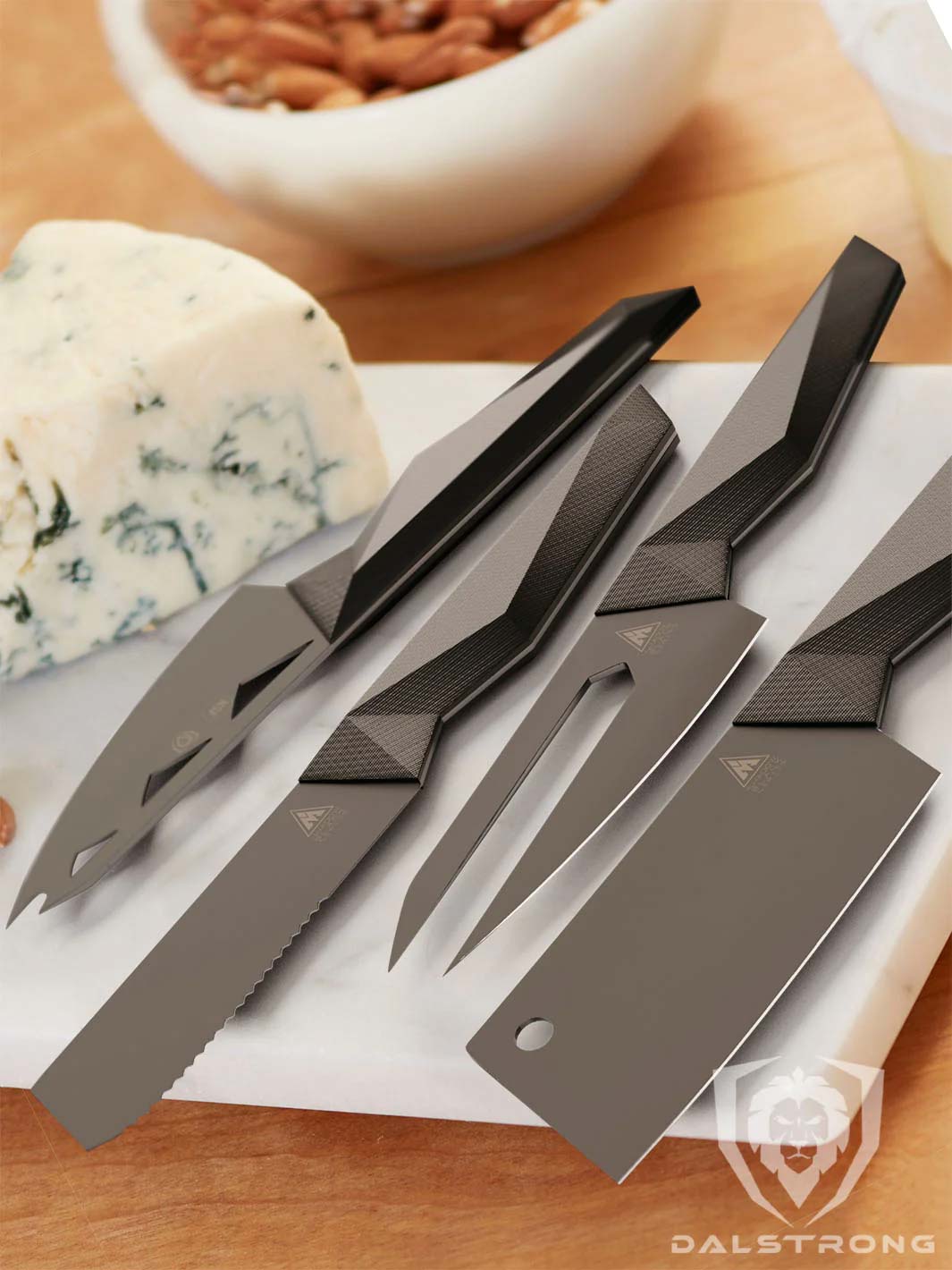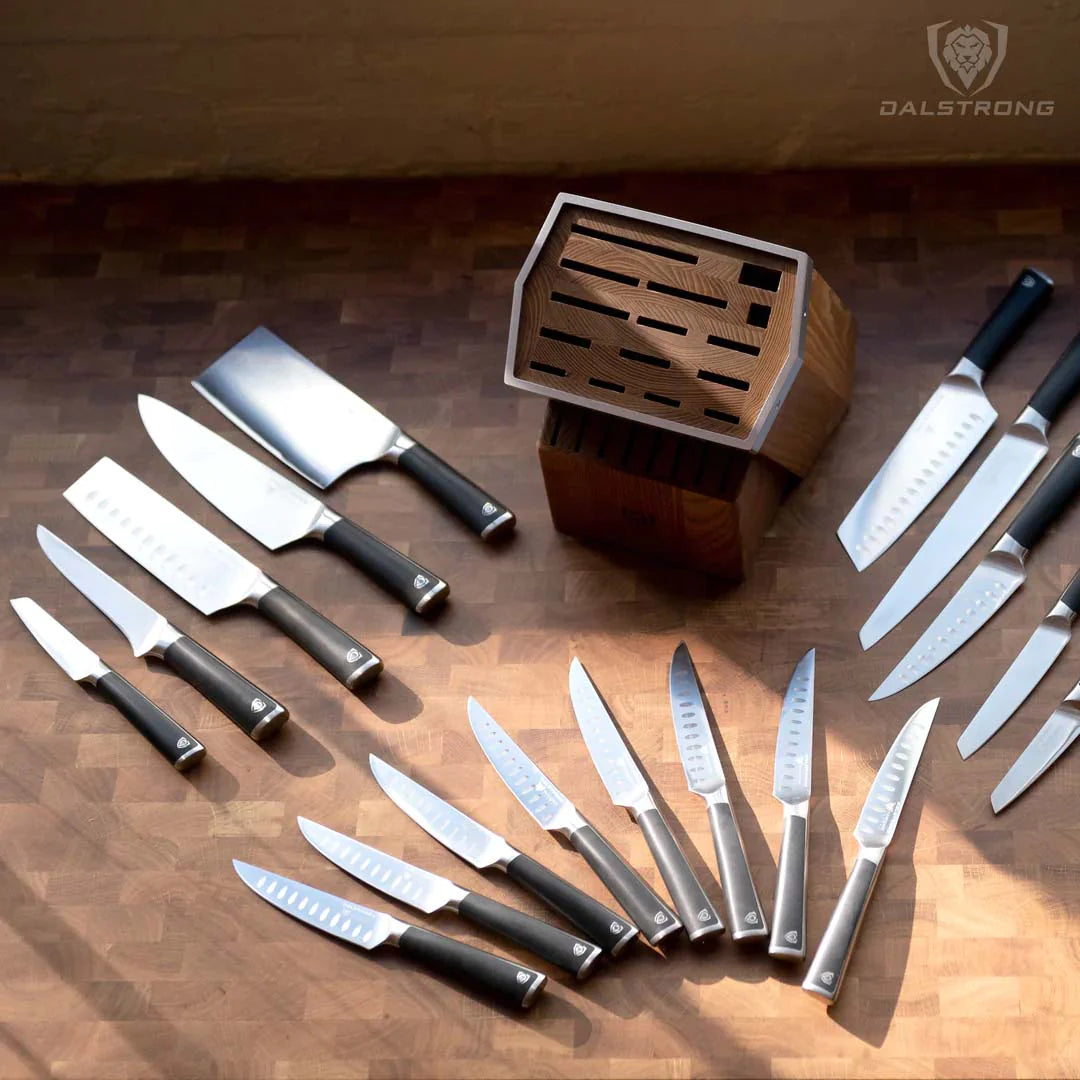What Is A Santoku Knife Used For
 Santoku Knife 7" Phantom Series Dalstrong
Santoku Knife 7" Phantom Series Dalstrong
In the world of kitchen cutlery, the Santoku knife emerges as a true maestro. Its classic style and cutting edge makes it perfect for both simple cooks and pro cooks.
Today, let's discover what is a santoku knife used for and inspect how it can simply transform ingredients into culinary wonders.
1. What Is A Santoku Knife
Originally from Japan, the word "Santoku" (三徳) can be roughly translated to mean "three virtues" or "three uses." These virtues typically refer to its ability to handle three types of cutting tasks: slicing, dicing, and chopping.
A Santoku knife has distinctive characteristics unique from other knife types. Here are some key characteristics of a Santoku knife:
Blade Shape
A Santoku knife has a relatively short, flat blade with a slight curve towards the tip. It usually ranges from 5 to 7 inches in length.
Blade Thickness
Santoku knives tend to be thinner compared to Western chef's knives.
Flat Edge Profile
Unlike a chef's knife, which has a curved edge that facilitates rocking motion, a Santoku has a straighter edge which is better suited for up-and-down chopping or slicing motions.
Pointed Tip
While the tip is not as pointed as some other types of knives, it's still useful for detailed work.
Granton Edge
Some Santoku knives have small indentations along the blade known as a "Granton edge." These create air pockets and reduce friction during slicing.
 Santoku Knife 7" Shogun Series ELITE Dalstrong
Santoku Knife 7" Shogun Series ELITE Dalstrong
Versatility
As mentioned earlier, a Santoku knife is designed to excel at slicing, dicing, and chopping vegetables, fruits, boneless meat, and fish.
Balance
It is likely to be well-adjusted, making it safe to make use of for a long period.
Material
High-quality Santoku knives are typically made from high-carbon stainless steel, which combines durability with rust resistance.
Full Tang (in high-quality versions)
A high-quality Santoku knife often has a full tang, which means the blade extends all the way through the handle. This provides stability and durability.
Handle
It's important to have comfortable grip regardless of the material (varying from wood to synthetic) especially for extended use in the kitchen.
Lightweight
Santoku knives are generally lighter than many Western-style chef's knives, which can make them easier to handle for some users.
Multi-Purpose Use
While not specialized for specific tasks like boning or filleting, a Santoku knife is a versatile tool that can handle a vast range of kitchen tasks.
A Santoku knife is flexible and ideal for many kitchen duties, it may not be excellent at particular duties that needs certain types of knives, such as filleting, butchering, or chopping through bones, which may require different tools.
Check out the best way to store your knives here.
2. What Is A Santoku Knife Used For
 Santoku Knife 7" Shadow Black Series Dalstrong
Santoku Knife 7" Shadow Black Series Dalstrong
A Santoku knife is a flexible kitchen tool that is essentially used for dicing, slicing, and chopping. Here are some usual uses for a Santoku knife:
Slicing
Santoku blades are superb for slicing duties, extremely when it comes to small cuts of fruits, vegetables, and boneless meats.
Dicing
The flat edge profile of a Santoku knife makes it efficient for dicing tomatoes, onions, and other vegetables into qually-sized pieces.
Chopping
The relatively short length and balanced weight of a Santoku knife make it well-suited for mincing garlic, chopping herbs, and breaking down larger pieces of food.
Julienning
The pointed tip and sharp edge of a Santoku knife make it a good choice for creating fine julienne cuts in vegetables, which are thin, matchstick-like strips.
Fine Detail Work
While not as specialized as some other knives, the pointed tip of a Santoku knife can still be used for tasks that require precision, like trimming or shaping ingredients.
Fish and Seafood
Santoku knives are commonly used for handling fish and seafood due to their precision and ability to make clean cuts. They are very ideal for slicing raw fish for dishes like sushi or sashimi.
Poultry and Meat (Boneless)
Santoku knives are ideal for cutting any boneless meat such as chicken breasts, steaks, and even pork chops.
Vegetable Preparation
A santoku knife is perfect for cutting all kinds of vegetables such as tomatoes, potatoes, to big chunky cabbage.
3. What Is The Difference Between A Santoku Knife And A Chef Knife
 Santoku Knife 7" Valhalla Series Dalstrong
Santoku Knife 7" Valhalla Series Dalstrong
Santoku knives and chef's knives are both flexible kitchen tools, but they have clear variability in terms of style, performance, and cultural origin. Here are the key variations between a Santoku knife and a chef's knife:
| Characteristics | Santoku | Chef's Knife |
| Origin | Originated in Japan. "Santoku" means "three virtues" or "three uses," referring to its proficiency in slicing, dicing, and chopping. | Originated in Europe, particularly France and Germany. It is a staple in Western culinary traditions. |
| Blade Shape | Has a relatively short, flat blade with a slight curve towards the tip. It typically ranges from 5 to 7 inches in length. It doesn't have a pointed tip. | Has a longer, broader, and more curved blade, commonly ranging from 8 to 12 inches in length. It has a pointed tip, which facilitates rocking motion during chopping. |
| Blade Thickness | Tends to be thinner, which allows for precise slicing. | Generally has a thicker blade, providing more heft and stability for heavier cutting tasks. |
| Edge Profile | Has a straighter edge, which is better for up-and-down chopping or slicing motions. | Has a curved edge that facilitates a rocking motion, making it great for tasks like mincing and dicing. |
| Versatility | The santoku knife excels at slicing, dicing, and chopping various vegetables, fruits, and meat (bonesless). | Very versatile and can handle a vast variety of kitchen tasks, including slicing, dicing, chopping, and even some specialized tasks like disjointing poultry or finely mincing herbs. |
| Cultural Influence | Reflects Japanese culinary traditions and is commonly used in Japanese cuisine. | Integral to Western cooking styles and is a standard tool in professional and home kitchens worldwide. |
| Handle | Often has a shorter, D-shaped handle, which is comfortable for a pinch grip. | Comes with a longer handle that provides a secure grip for various cutting techniques. |
| Weight | Tends to be lighter, which some users find easier to handle for precision tasks. | Can be heavier, which provides additional cutting force for tougher materials. |
Eventually, the answer between a Santoku knife and a chef's knife rely on personal liking, the kind of cuisine you oftenly prepare, and the particular duties you frequently execute in the kitchen. Many chefs have both types of knives in their collection and use them based on the requirements of a particular dish.
4. Must-Have Dalstrong Santoku Knives
The Dalstrong Phantom Series 7" Santoku Knife. Meticulously crafted, this knife combines Japanese tradition with modern innovation. The blade's ruthlessly sharp edge effortlessly glides through ingredients, while the ergonomic handle ensures comfort and control. The striking design adds a touch of sophistication to any kitchen.
PROS:
- The Phantom Series Santoku Knife boasts razor-sharp craftsmanship, ensuring precise cuts every time.
- Crafted for support, the handle gives a firm grip, lessen hand fatigue during extended use.
- The knife's striking, unique design adds a touch of elegance to any kitchen.
- From delicate slicing to robust chopping, this knife handles a wide range of culinary tasks with finesse.
CONS:
- If you want for a cleaner look, the Japanese AUS-8 blade design might be a little too busy for you.
2. Santoku Knife 7” Valhalla Series
Crafted with precision and inspired by the strength of Norse legends, the Dalstrong Valhalla Series 7" Santoku Knife is a testament to culinary prowess. Its finely honed edge effortlessly slices through ingredients, while the meticulously engraved blade and ornate handle pay homage to the artistry of ancient craftsmanship.
PROS:
- The Valhalla Series Santoku Knife is honed to perfection, ensuring precise cuts with every use.
- Featuring an attractive blade and complex-style handle, this blade is simply a work of art.
- Has an ergonomically fit handle, giving a secure and comfortable grip.
CONS:
- Some people prefer a more modest looking handle. If that's you, then our Phantom or Gladiator series is the way to go.
3. Santoku Knife 7” Shadow Black Series
The Dalstrong Shadow Black Series 7" Santoku Knife is crafted for those looking for a sleek and ultra-performing knife. Crafted from high carbon 7CR17MOV-X, this knife is built to withstand rigorous cutting tasks.
PROS:
- Features a razor-sharp edge with unparalleled precision.
- Features a smooth, matte black non-reflective titanium-nitride coating for added sophistication and non-stick properties.
- Making sure the highest quality of quality and safety, this knife is NSF certified, making it a be sure tool in professional kitchens.
- The correctly profile handle gives a cozy, safe grip, allowing for nimble, managed move in the kitchen.
CONS:
- It may not be the go-to choice for tasks that require heavier chopping or specialized knives like cleavers for bone-in cuts.
4. Santoku Knife 7” Shogun Series
The Dalstrong Shogun Series ELITE 7" Santoku Knife. Admirable in style and engineering, this blade is a witness to the peak of Japanese craftsmanship. Featuring a stunning Damascus blade pattern, this knife has scalpel-like sharpness that ensures precise cuts everytime.
PROS:
- The Shogun Series ELITE Santoku Knife is honed to a surgical sharpness, ensuring clean, precise cuts for every culinary creation.
- Precisely made with a Damascus design and a G-10 handle, this blade is a work of art that gives out richness and experience.
- The unsually sharp blade keeps its edge for extended periods, lessing the call for continuous sharpening.
CONS:
- The premium materials and quality of the blade means that it's on the higher end of our prices.
5. Santoku Knife 7” Delta Wolf Series
The Dalstrong Delta Wolf Series 7" Santoku Knife is another masterpiece, featuring an ultra-sharp and ultra-thin blade crafted from premium high-carbon 9CR18MOV steel, making any cutting task friction-free. It has an exquisite ergonomic handle that is both cool to look and comfortable to use.
PROS:
- The Delta Wolf Series Santoku Knife is honed to have a surgical sharpness, ensuring clean, precise cuts for culinary perfection.
- All knives from the Delta Wolf Series have a black, matte titanium-nitride coating that enhances the blade's non-stick properties.
- Very versatile and can do a variety of cutting tasks from delicate slicing to heavy chopping.
CONS:
- If you’re the kind of person who favors a minimal style, you might want to check out the Crusader Series.
5. Frequently Asked Questions
What can you cut with a Santoku knife?
A Santoku knife excels at slicing, dicing, and chopping a wide range of fruits, vegetables, and boneless meat. However, it may not be suitable for heavy-duty tasks like cutting through bones or tougher, denser materials.
Can I use a Santoku knife for meat?
Yes, a Santoku knife is suitable for cutting meat, particularly boneless cuts. Its sharp, fine edge allows for precise slicing and dicing. However, for tasks involving bones or tougher cuts, a specialized meat cleaver or boning knife may be more appropriate.
Do pro chefs use santoku knives?
Yes, many professional chefs use Santoku knives in their kitchens because of their versatility, ergonomically comfortable design, and precise cutting ability. It's very favored in Asian cuisine and is also valued in Western kitchens for its vast range of applications. However, some chefs may prefer to use a combination of different knives for specialized tasks.
Can Santoku cut bone?
A Santoku knife is not designed for cutting through bones. Its thin, narrow blade and sharp edge are optimized for slicing, dicing, and chopping boneless meats, vegetables, and fruits. Attempting to cut through bones with a Santoku knife can damage the blade and potentially lead to injury. For tasks involving bones, it's best to use a specialized knife like a cleaver or a boning knife.






































































































































































































